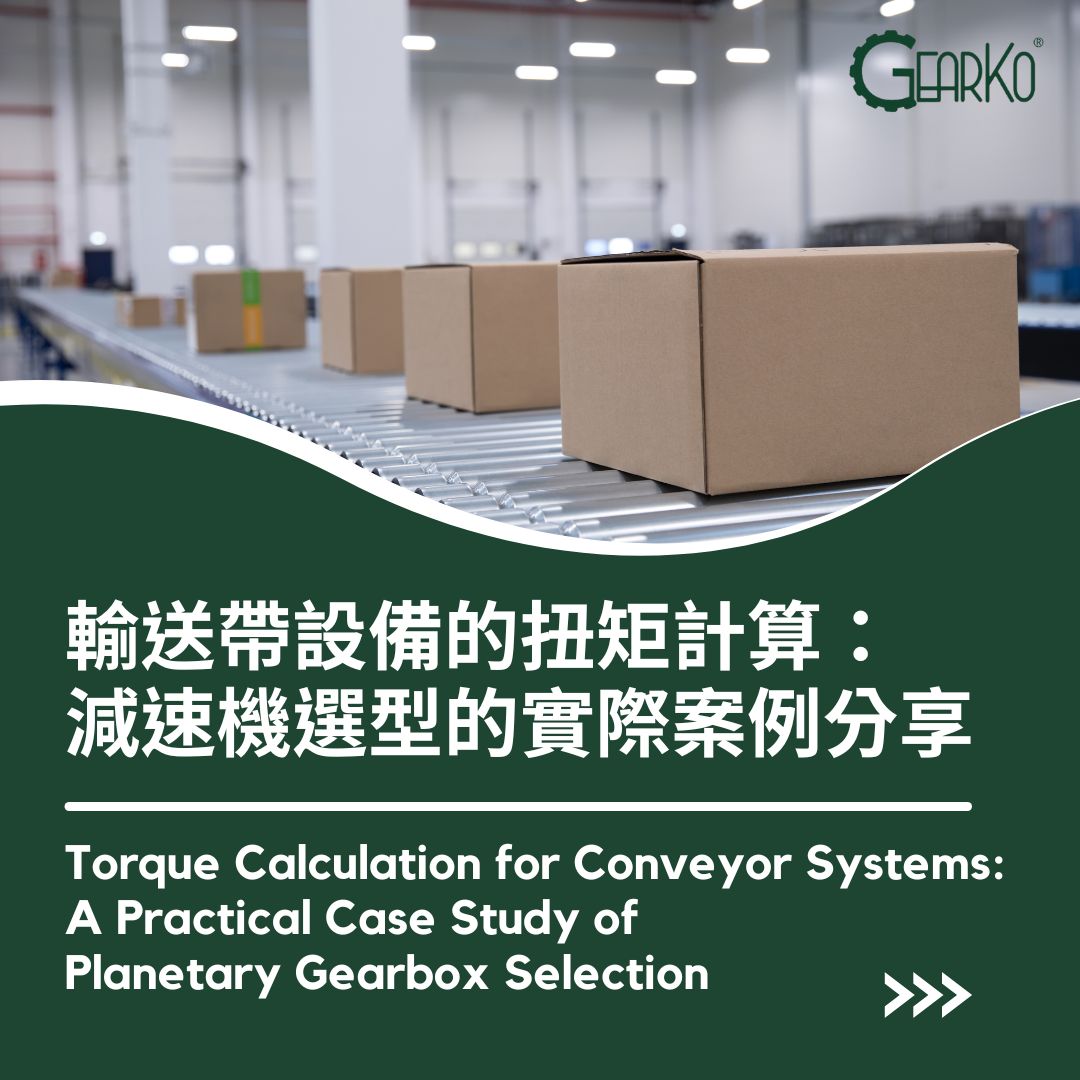2025.01.08
Torque Calculation for Conveyor Systems: A Practical Case Study of Planetary Gearbox Selection

Conveyor systems are a common type of automation equipment, known for their wide range of applications and cost-effectiveness. They excel particularly in storage systems and assembly lines, providing efficient and economical transport solutions. However, to ensure stable and long-lasting operation, accurately calculating torque and selecting the appropriate planetary gearbox is essential.
Below is a detailed case study demonstrating the torque calculation steps and the process of selecting a gearbox and motor for a conveyor system.

Case Background
This case focuses on torque calculation and selection in a conveyor system. The given conditions are as follows:
- Object weight: 10 kg
- Conveying distance: 1000 mm
- Displacement time: 1.5 seconds
- Driven wheel diameter: 100 mm
- Driving wheel diameter: 100 mm
Step 1: Calculate Acceleration and Deceleration Requirements
Assuming both acceleration and deceleration times are 0.2 seconds:
- Maximum velocity (Vmax) = 1000 ÷ (1.5 - 0.2 - 0.2) ≒ 910 mm/s
- Acceleration (a) = 910 ÷ 0.2 = 4.55 m/s²
Step 2: Calculate Linear Force
- Force (F) = Object weight × Acceleration = 10 × 4.55 = 45.5 N
Step 3: Calculate Torque and Speed for the Driven Wheel
- Driven wheel torque (T_driven) = Force × Driven wheel radius = 45.5 × 0.05 = 2.275 N·m
- Driven wheel speed (RPM_driven) = 910 ÷ (100 × π) × 60 ≒ 174 r/min
Step 4: Calculate Torque and Speed for the Driving Wheel
Since the diameter ratio between the driven and driving wheels is 1:1:
- Driving wheel torque (T_driving) = T_driven = 2.275 N·m
- Driving wheel speed (RPM_driving) = RPM_driven = 174 r/min
Step 5: Gearbox and Motor Selection Analysis
Based on the torque and speed requirements, three configurations were evaluated:
|
Motor Power |
750W Without Gearbox |
200W + 10:1 Gearbox |
400W + 10:1 Gearbox |
|
Motor Rated Torque (Nm) |
2.4 |
0.64 |
1.3 |
|
Reduction Ratio |
None |
10 |
10 |
|
Safety Factor |
1.06 |
2.81 |
5.71 |
|
Evaluation Result |
OK |
OK |
OK |
Configuration Analysis:
- Configuration 1: 750W Without Gearbox
While this meets the requirements, the safety factor is the lowest, making it susceptible to external forces and potential overload. - Configuration 2: 200W + 10:1 Gearbox
Increases torque with a safety factor of 2.81, offering a cost-effective and reliable solution. - Configuration 3: 400W + 10:1 Gearbox
Provides the highest safety factor, delivering optimal performance. This configuration was ultimately chosen by the client.
Conclusion and Recommendations
Planetary gearboxes not only amplify torque but also protect motors from external force shocks, enhancing the stability and lifespan of conveyor systems.
When selecting configurations, designers should evaluate factors such as reduction ratio, torque requirements, safety factor, installation space, and cost constraints to achieve the best results.
If you have any questions about planetary gearbox selection or design, feel free to contact GearKo Taiwan. Our team is ready to provide professional technical support and customized solutions.